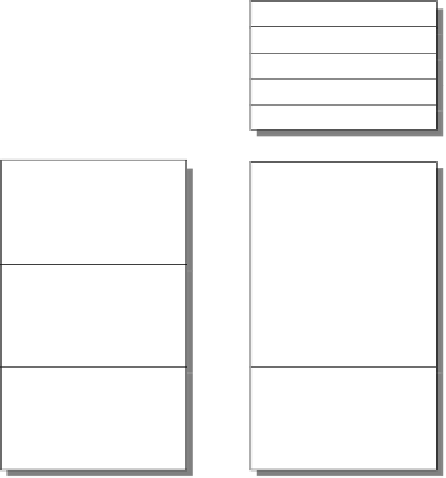Information Technology Reference
In-Depth Information
Application
Presentation
Application
Presentation
Session
Application
layer
Session
Transport
Application
layer
Transport
Network
Network
Message filtering
Message handling
Status handling
Fault confinement
Error detection
Error signalling
Message validation
Arbitration
Message framing
Bit timings
Signal levels
Connector types
Cable types
Object
layer
Object
layer
Data link
layer
Data link
layer
Transfer
layer
Transfer
layer
Physical
layer
Physical
layer
Physical
layer
Physical
layer
CAN model
OSI model
Figure 21.1
CAN/OSI models
21.2 CAN physical
The CAN bus uses non-return to zero (NRZ) with bit-stuffing for the physical layer. A bit
can either be
dominant
(a logical 0) or
recessive
(logical 1), which corresponds to certain
electrical levels which depend on the physical layer used. Modules are connected to the bus
in a wired AND, thus if one node puts the line to a dominant level, then the whole line goes
to this state, regardless of the other levels on the line.
Several physical layers can be used, such as:
•
ISO 11898 - this uses a two-wire balanced signalling scheme, which can be shielded or
unshielded. Implemented by the 82C250 transceiver device; the cable impedance is
nominally 120
.
•
ISO 11519 - lower speed applications for two-wire balanced signalling scheme.
•
Proprietary physical layers.
•
RS-485 standard connection.
•
SAE J2411 - single-wire cable.
Ω
The maximum speed of a CAN bus is 1 Mbps. At this maximum speed the maximum cable
length of is 40 m (130 ft). This is a limited length, as the arbitration scheme requires that the
first pulse propagates to the most remote node and back again before the bit is sampled.





